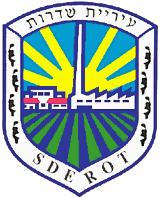
When she was just eight years old, Madeleine Testyler was rounded up and forcibly taken - together with over 13,000 of Paris' Jews - to city's winter stadium to be transferred to the Nazi concentration camps. Her story is worth repeating.
On July 16, 1942, 13,152 Jews, mostly women and children, were rounded up and taken to Vélodrome d'Hiver, the indoor cycling stadium next to the Eifel Tower. Within days they were transported to the Drancy, Pithiviers, Compiègne and Beaune-la-Rolande transit camps, after which they were sent toAuschwitz. Less then 40 of them survived.
This event, which was recently retold in the French film "La Rafle (The Round Up)", and code-named "Operation Spring Breeze" by the Nazis, was not carried out by the Germans, but by the French police officers and gendarmes, who used lists of addresses given to them by the City of Paris.
Madeleine Testyler, then Madeleine Reiman was only eight years old when she was taken with her with her mother and six-year-old sister Arlette.
Before they were taken away, her mother managed to phone the ex-employer of herself and her husband, the owner of one of France's leading fur companies, and begged him for help. Madeleine's father, Abraham Reiman, had been sent to the camps along with some 4,000 other men a year earlier and Madeline's mother had begged her employer to try to intervene to get her husband out of the camps...but to no avail.
"You didn't help my husband," she told him over the phone, "at least try to help us." That telephone call would later save her and her daughters' lives.
Madeleine and her family were loaded on to trucks and taken to the stadium. "Being among the first, we found a corner for ourselves between two stands," 76-year-old Madeleine says from her home in Tel Aviv. "To my little sister and I the whole thing just seemed like a game at the time."
They later were taken to the Beaune-la-Rolande camp, a way station to Auschwitz.
There, the sisters shared a bunk with eight-year-old Lazar Sheinbuch and his four-year-old sister Rezin, their neighbors from Paris.
There is little doubt that they would have been sent to Auschwitz, but fate, in the form of their parent's former employer intervened. The owner of the fur company she had phoned on the day of their arrest had managed to use his influence to get their freedom, and the three were released. "We even got a permit to be in the street after curfew hours for the Jews in Paris, because our train was going to arrive in the city in the evening hours."
The Sheinbuch children, on the other hand, were caight up in the Shoah. "That entire family was exterminated," Madeleine said. "We slept with them on the same bunk," she said, adding that when they left the camp, her mother offered to take the neighbor's children, but their mother refused to part with them. "She said she heard that all the children would be released soon."
Shortly after their lucky escape from Beaune-la-Rolande from the mother and her daughters left Paris and moved to Vendome, which was in Vichy and not under occupation, and hid out until the end of the war.
Madeleine Testyler's subsequent story is a happy one.
After her mother's death, when she was thirteen, she decided that she was going to be independent and started working in the fur industry as an apprentice. She al;so began to paint and by the age of 20, she had achieved some success both in her professional and personal life, when she met Yosef Testyler, a young Jewish Holocaust survivor from Poland who also worked in the fur business, and the couple married.
Madeleine Testyler became a renowned painter, presenting her works in many exhibitions, including solo exhibitions in France. About 15 years ago she also began to sculpt, and has also received renown in that field in Israel, where she and her husband now live.
The Vélodrome d'Hiver stadium where the Jews were collected was demolished in 1959. And in 1995, 53 years after the round up, French President Jacques Chirac formally apologized to the Jewish community of France for his countrymen's craven behavior.






No comments:
Post a Comment